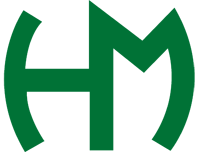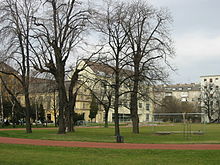
The Academy of Fine Arts Vienna is a public art school in Vienna, Austria.

Baron Carl von Rokitansky was an Austrian physician, pathologist, humanist philosopher and liberal politician, founder of the Viennese School of Medicine of the 19th century. Founder of science-based diagnostics.

The Democratic Union of Hungarians of Croatia is a Croatian non-governmental organization that represents the Hungarian minority. It was established in 1993, and is headquartered in Osijek. It is close to Fidesz and the late Croatian president Franjo Tuđman.

Alfred Hrdlicka was an Austrian sculptor, painter, and professor. His surname is sometimes written Hrdlička.
Hans Sedlmayr was an Austrian art historian. From 1931 to 1932 and from 1938 onwards, he was a member of the Nazi Party.
The Theresian Military Academy is a military academy in Austria, where the Austrian Armed Forces train their officers. Founded in 1751, the academy is located in the castle of Wiener Neustadt in Lower Austria.

The Akademisches Gymnasium is a state gymnasium school located in Vienna, Austria. Founded by the Jesuits in March 1553, it is the oldest secondary school in Vienna and is now nondenominational and non-feepaying. The school offers a humanistic education and is known to be rather liberal compared to other traditional secondary schools in the city. Currently, there are approximately 600 pupils in 24 classes.
Fritz Schachermeyr was an Austrian historian, professor at the University of Vienna from 1952 until retirement.

Aries Moross is an English graphic designer, artist, illustrator and art director based in London. They mostly focus on lettering and typography in their works of art.

Krayem Maria Awad is a Vienna-based painter, sculptor and poet of Syrian origin.
The Pawsey Medal is awarded annually by the Australian Academy of Science to recognize outstanding research in the physics by an Australian scientist early in their career.

The Döbling Cemetery is a cemetery in the 19th district of Döbling in Vienna, Austria.
The University of Pretoria Faculty of Engineering, the Built Environment and Information Technology educational programs stretch back to 1908 and consists of the School of Engineering, School for the Built Environment, School of Information Technology and the Graduate School of Technology Management. The university is the only African collaborator in the CDIO engineering initiative: Since 1997, the university as a whole has produced more research outputs every year than any other institution of higher learning in South Africa, as measured by the Department of Education's accreditation benchmark.

The Diplomatic Academy of Vienna, also known as the Vienna School of International Studies, is a postgraduate professional school based in Vienna, Austria, with focused training for students and professionals in the areas of international affairs, political science, law, languages, history and economics.It is the oldest diplomatic academy in the world.
Edith Saurer was an Austrian historian, university professor at the University of Vienna, scientific author, and publisher. She is regarded as a central cofounder and advocate of feminist historiography in Austria. She received the Käthe Leichter Prize, Gabriele Possanner State Prize, and the Golden Medal for her services to the State of Vienna.

Friedrich Peter Freiherr Duka von Kádár was of Croatian Serb ancestry privy councillor, officer (Feldzeugmeister) and owner of the Hungarian Infantry Regiment No. 39, then State and Conference Council of the Emperor. He was a recipient of the Knight's Cross of the Military Order of Maria Theresa. He is remembered as a great adversary of Napoleon and to have negotiated an armistice with him at Lusigny-sur-Barse.

Friedrich Wildgans was an Austrian composer and clarinettist.

Elfriede Tungl was an Austrian civil engineer. She was the first Austrian woman to earn a doctorate in civil engineering and in 1973 became the first female associate professor at the Vienna University of Technology.

Katja Sturm-Schnabl is a Carinthian-Slovene linguist and literary historian known for her research and contemporary eyewitness accounts of the 20th century in central Europe.





















